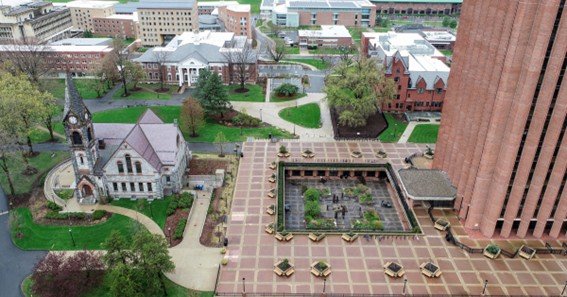The University of Massachusetts Amherst (UMass Amherst) has a complex history regarding racial integration and segregation. While it was not legally segregated like institutions in the Southern United States, the university experienced de facto segregation and racial tensions, particularly during the mid-20th century.
Historical Context of Segregation at UMass Amherst
In the 1960s, UMass Amherst had a notably low enrollment of Black students. In 1965, out of approximately 18,000 students, only about 50 were Black, with the majority being graduate students. This disparity highlighted the university’s struggle to attract and support Black students, despite not having formal segregation policies.
The campus climate during this period was marked by racial tensions. Professor John Bracey, who joined UMass Amherst in 1973, recalled that students often self-segregated in classrooms, with Black and white students sitting apart. He also noted instances where white students would avoid classes taught by Black professors, sometimes due to parental pressure.
Student Activism and Institutional Response
The late 1960s and early 1970s saw increased activism among Black students and faculty at UMass Amherst. In 1968, the university admitted 121 Black students through the Committee for the Collegiate Education of Black Students (CCEBS), a significant increase aimed at addressing the underrepresentation of Black students. However, these students often felt isolated and subjected to racial hostility.
A pivotal event occurred in 1970 when Black students took over Mills House, a dormitory, in response to racial harassment. This protest led to the establishment of the New Africa House, which became a cultural center and home to the newly formed Afro-American Studies Department. This development marked a significant step toward creating a more inclusive environment on campus.
Progress and Ongoing Challenges
Over the decades, UMass Amherst has made strides in promoting diversity and inclusion. The Afro-American Studies Department, established in 1970, has become a cornerstone of the university’s commitment to African American scholarship. Additionally, the university has implemented various initiatives to recruit and support students of color.
Despite these efforts, challenges persist. Incidents of racial tension and the need for continued support for minority students highlight the ongoing journey toward true inclusivity. The university’s history reflects both the progress made and the work still required to overcome the legacy of segregation and discrimination.
FAQ
1. Was UMass Amherst ever legally segregated?
No, UMass Amherst was not subject to legal segregation laws like those in the Southern United States. However, de facto segregation and racial disparities were evident, particularly in the mid-20th century.
2. What led to the creation of the Afro-American Studies Department at UMass Amherst?
The department was established in 1970 following activism by Black students and faculty who sought greater representation and support on campus. The takeover of Mills House was a significant catalyst for this development.
3. How did the university respond to the Mills House takeover?
In response to the protest, the university agreed to transform Mills House into the New Africa House, serving as a cultural center and housing the Afro-American Studies Department.
4. What is the current status of diversity and inclusion at UMass Amherst?
UMass Amherst has implemented various initiatives to promote diversity and support students of color. While progress has been made, the university continues to address challenges related to racial inclusion.
5. Who was Professor John Bracey, and what was his role at UMass Amherst?
Professor John Bracey joined UMass Amherst in 1973 and was a faculty member in the Afro-American Studies Department. He provided firsthand accounts of the racial dynamics on campus during his tenure.
In summary, while UMass Amherst was not legally segregated, it experienced significant racial disparities and tensions. Through activism and institutional changes, the university has made progress toward inclusivity, though challenges remain.










